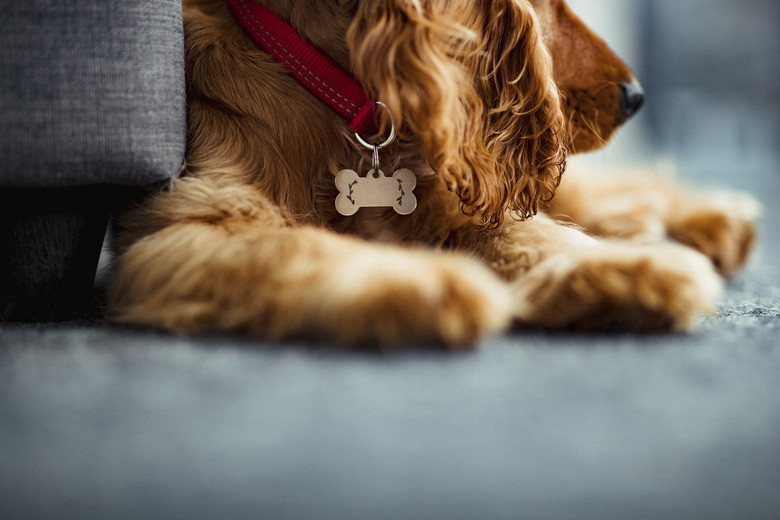How To Silence Dog Tags
Dog tags are important for a variety of reasons, which can include helping others get your lost pooch back to you and helping people who find your dog understand his medical condition if that becomes a problem when you're not around. The constant clinking of dog tags can drive you crazy, however, so you'll eventually be tempted to take them off, which can lead to you forgetting to put them back on when you leave the house. Reviewing some ideas for dog tag silencers and other solutions can help you handle this problem with relative ease.
Do
you need dog tags?
The first step in dealing with noisy dog tags is to determine how many you need (if any) and what information they should contain. You'll want to keep some type of ID attached to your dog whenever she leaves the house. In addition to your contact information, you'll want to include any important medical information.
Once you decide what information you want to stay with your pet, decide if this information needs to be on a tag or if it can be attached to your dog's collar another way. Chipping your dog is a safer way to help your dog get back home if she's lost and taken to an animal shelter, but it won't help the average person get in touch with you quickly if your pooch is found. The American Society for the Prevention of Cruelty to Animals recommends that you do both: have your dog chipped and use an ID tag.
Try rubber bands
Try
rubber bands
Buy some thin and thick rubber bands and wrap them around the IDs to create silent dog tags. When your dog walks or runs, the rubber bands will eliminate the metal or plastic tags from hitting each other. This might not be a long-term solution, however, as rubber bands can slip, break, or dry out and rot after a while.
Try some tape
Try some
tape
Hopefully, your dog's tags will rarely be needed. In that case, tape them together to stop the jangling. When someone finds your dog and needs to get the information from her tags, he can cut the tape and read the information. Since this is (hopefully) likely to only happen once a year or so, it's a cheap, effective solution. Make sure you wrap the tape carefully; if you leave any of the adhesive side exposed, it might catch and pull on the dog's fur.
Dog tag silencers
Dog tag silencers
Have you ever seen the frames that go around car license plates? They often have the name of the car dealer that sold the car, or they are vanity frames that let people show their favorite sports team or the college they attended.
You can get similar frames for dog tags, called dog tag silencers. These are often rubber frames into which round or diagonal tags fit. They act like rubber bands, eliminating the noise of clinking tags. You can find hundreds of choices starting at less than $2 on Amazon (plus shipping) or just do a web search for "dog tag silencers." Just slip your tag into the rubber cover and you're good to go.
Use slide-ons
Use slide-ons
Another way to eliminate the noise of tags is to use dog collar slide-ons instead. These are metal tags that slide onto and rest against the outside of a dog collar. They stay in place, don't rub against the dog, and are easy to read. These inexpensive options cost a bit more than silencers but let you engrave the information into the tags.
Pouch your pooch
Pouch
your pooch
If you need to use more than one tag for your dog, another option is to use a tag pouch. You slip the tags into the pouch and then snap it onto any dog collar. Some models attach with a thin, metal ring similar to the ones you use to add extra keys to your key chain.
Try several options at once
Try several
options at once
You'll hopefully have your dog for many years and will want to get the best option for dealing with noisy tags. Rather than trying one option, finding out it doesn't work, and then having to order the next option (and so on), think about buying three or more items and trying them during a week-long test period.
You'll probably spend less than $20 but will find a lifelong solution that keeps you and your pet happy. Because you'll probably be out walking or driving when looking for a lost pooch, make sure to put your cellphone number on your dog's tags.
